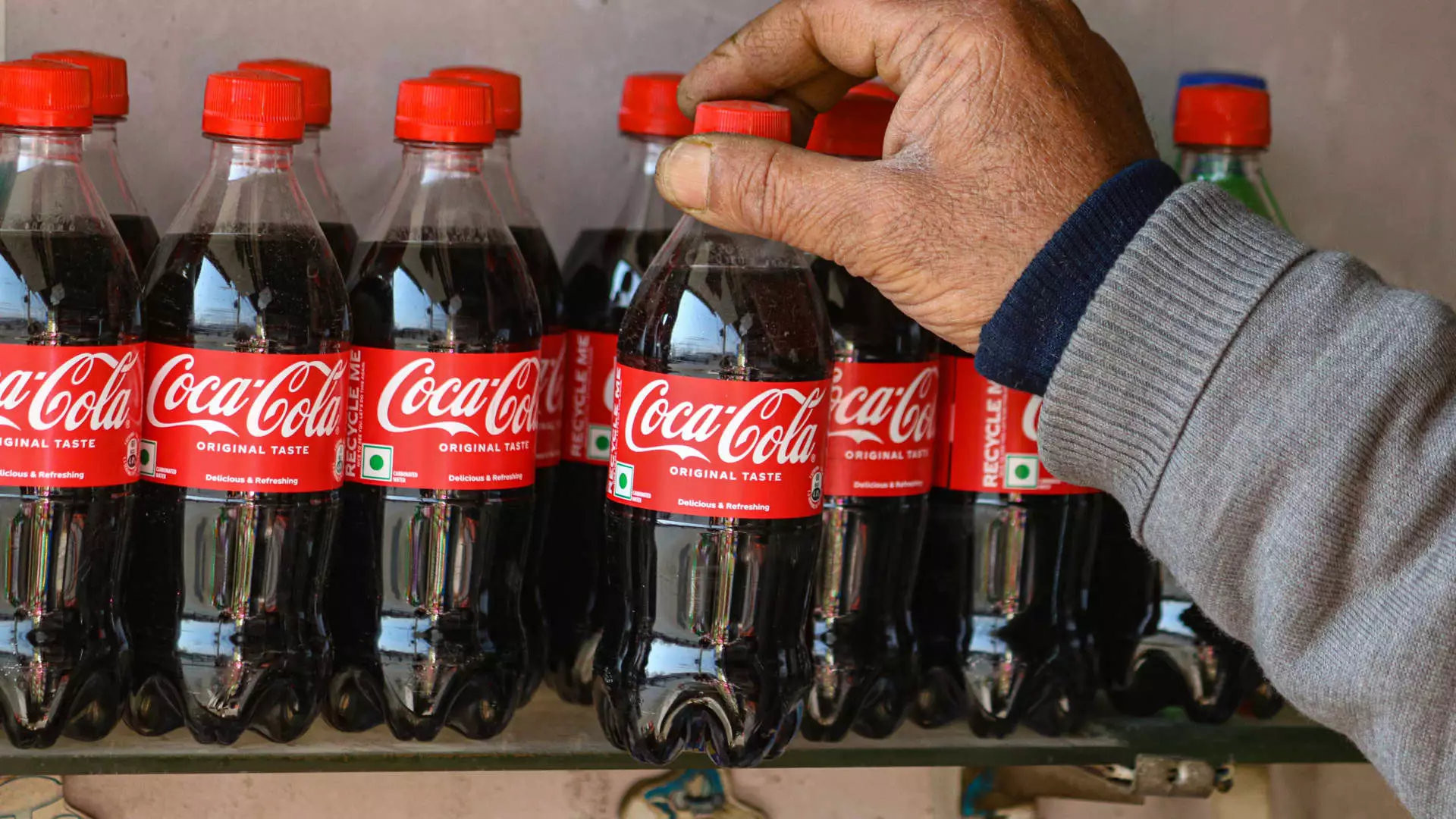As the global trade environment evolves, corporations must adapt to new political and economic nuances that can significantly affect their operational strategies. In particular, the recent tariff increases imposed by the Trump administration have created a ripple effect across various industries, with beverage giants like Coca-Cola feeling the pressure. CEO James Quincey’s remarks on this situation shed light on how Coca-Cola plans to navigate these challenges, especially in terms of its packaging choices.
President Trump’s decision to elevate tariffs on aluminum and steel imports to 25% poses an immediate concern for many manufacturers reliant on these materials. Coca-Cola, known for its extensive use of aluminum cans, may find itself at a crossroads where traditional packaging choices could become economically unviable. Quincey emphasized on a recent earnings call that Coca-Cola is not only cognizant of rising input costs but is also prepared to pivot its packaging strategy. If aluminum costs escalate, the company might resort to utilizing more polyethylene terephthalate (PET) plastic bottles.
Although Quincey downplayed the tariffs’ long-term financial implications for Coca-Cola, stating that packaging remains a minor cost component in a multibillion-dollar enterprise, the reality is that consumer preferences and environmental considerations could sway Coca-Cola’s future actions.
Consumer Demand and Packaging Choices
One of the most critical aspects of packaging is its ability to ensure product affordability while also attracting consumer demand. If aluminum prices rise significantly, making cans less competitive, the switch to plastic could cater to the financial sensibilities of consumers who prioritize cost over environmental impact. This move towards more plastic bottles also reflects a broader market trend, where companies emphasize convenience without fully accounting for sustainability implications. While Coca-Cola may position itself as responsive to economic challenges, the potential environmental fallout from increasing plastic use places the company’s commitment to sustainability into question.
The distinction between aluminum and plastic recycling rates is an essential factor in this discussion. Coca-Cola’s intention to ramp up PET bottle production may initially appear economically savvy but raises sustainability questions. In 2018, the recycling rate for PET was markedly lower than that for aluminum—29.1% compared to 50.4%, according to the Environmental Protection Agency. Consequently, while plastic may provide a short-term solution to tariff-related challenges, it ignores the longer-term goal of sustainable waste management.
Additionally, the shift to plastic could be seen as a regression for Coca-Cola, especially after it has worked to enhance its aluminum packaging options. Having previously garnered attention for its more environmentally friendly initiatives, such as the launch of canned Dasani and Smartwater, pivoting back to plastic represents a contradiction in its corporate sustainability narrative.
Greenhouse Consciousness Amidst Corporate Gains
Coca-Cola has not been without its controversies, notably being labeled by Greenpeace as the world’s worst polluter due to its single-use plastic consumption for six consecutive years. The recent reduction of its sustainability targets—from 50% recycled packaging by 2030 to only 35-40% by 2035—also raises eyebrows about its commitment to addressing the environmental crisis surrounding plastic waste. The company claims it will focus on ensuring the collection of 70-75% of the equivalents in bottles and cans introduced each year, but critics may view this as an insufficient response to a mounting global crisis.
To summarize, Coca-Cola’s strategic response to tariff increases and associated economic pressures invites a lingering debate over sustainability, consumer affordability, and corporate responsibility. As the beverage industry grapples with complex supply chain dynamics and environmental imperatives, Coca-Cola must carefully calibrate its business model to align with emerging consumer expectations while also addressing pressing sustainability issues. The decisions made in the near future could either solidify its position as a steadfast industry leader or invite significant criticism from environmental advocates who urge swift action in the face of a global plastic crisis.



Leave a Reply